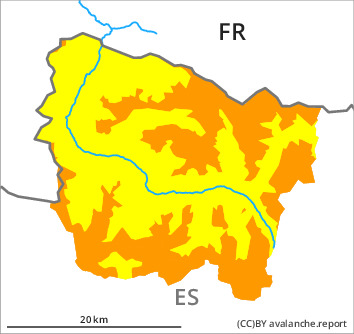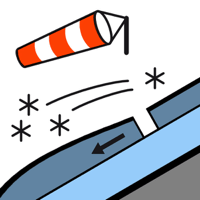
Danger level

2000m
Avalanche Problem

Wind slab

2000m


Persistent weak layer

2000m


New snow and weakly bonded old snow represent the main danger. Gliding snow requires caution.
The fresh and somewhat older wind slabs can be released easily by a single winter sport participant especially on southeast to south to west facing aspects above approximately 2000 m. Caution is to be exercised at their margins in particular. Mostly the avalanches in these loacations are medium-sized.
The new snow of last week is lying on the unfavourable surface of an old snowpack on shady slopes above approximately 2000 m. In particular in little used backcountry terrain these are in some cases large. Remotely triggered avalanches are possible in isolated cases. Transitions from a shallow to a deep snowpack where weaknesses exist in the old snowpack are especially dangerous.
As a consequence of warming during the day and solar radiation gliding avalanches are possible from midday, in particular medium-sized ones.
Backcountry touring and other off-piste activities call for experience in the assessment of avalanche danger and careful route selection.
The new snow of last week is lying on the unfavourable surface of an old snowpack on shady slopes above approximately 2000 m. In particular in little used backcountry terrain these are in some cases large. Remotely triggered avalanches are possible in isolated cases. Transitions from a shallow to a deep snowpack where weaknesses exist in the old snowpack are especially dangerous.
As a consequence of warming during the day and solar radiation gliding avalanches are possible from midday, in particular medium-sized ones.
Backcountry touring and other off-piste activities call for experience in the assessment of avalanche danger and careful route selection.
Snowpack
>
As a consequence of new snow and a sometimes moderate wind from northeasterly directions, mostly small wind slabs formed in the last few days in the vicinity of peaks. Faceted weak layers exist deep in the snowpack in particular on wind-protected shady slopes. Whumpfing sounds and the formation of shooting cracks when stepping on the snowpack and stability tests indicate a sometimes precarious avalanche situation.
Above the tree line there are 50 to 100 cm of snow, and even more in some localities. At intermediate and high altitudes snow depths vary greatly, depending on the infuence of the wind.
Above the tree line there are 50 to 100 cm of snow, and even more in some localities. At intermediate and high altitudes snow depths vary greatly, depending on the infuence of the wind.
Tendency
Gradual increase in danger of dry avalanches as a consequence of new snow and wind.